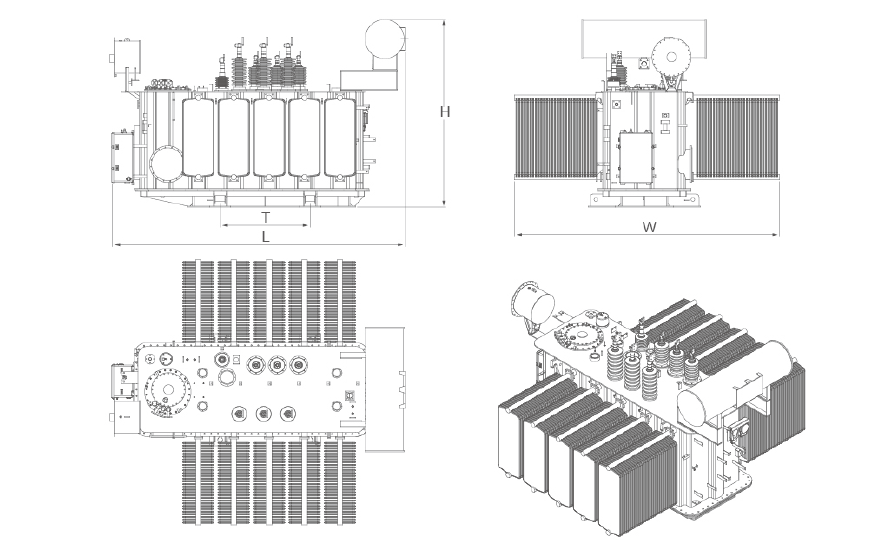A power transformer is a critical component in the electrical power distribution system. It is designed to transfer electrical energy between circuits through electromagnetic induction, stepping up or stepping down voltage levels to suit specific requirements. Power transformers are widely used in transmission networks for stepping up or stepping down voltages in high-capacity systems.
Types of Power Transformers
Based on Application:
Step-Up Transformer: Increases the voltage for transmission.
Step-Down Transformer: Reduces voltage for distribution.
Based on Construction:
Core Type: Cylindrical core design.
Shell Type: Enclosed core design for added protection.
Based on Cooling Methods:
Oil-Cooled Transformers: Use insulating oil for cooling.
Dry-Type Transformers: Use air or other gases for cooling.
Special Types:
Autotransformers
Phase-Shifting Transformers
Distribution Transformers (for smaller-scale applications).
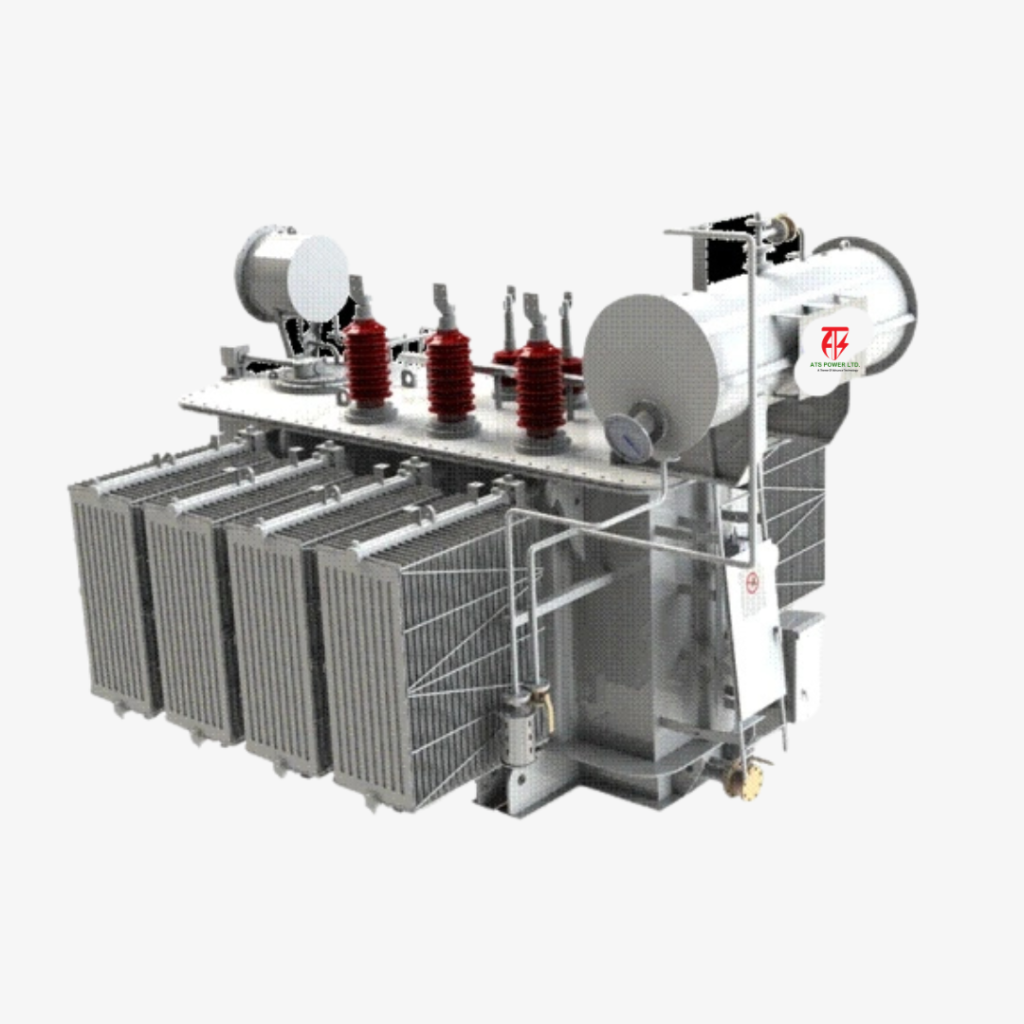
Key Features
High Efficiency: Designed for minimal energy loss during operation. Robust Construction: Durable materials for long-term operation. Voltage Range: Operates across a wide voltage range. Insulation: High-quality insulation to prevent breakdowns. Low Noise Levels: Advanced design to minimize operational noise.
Technical Specifications
Electrical Data:
Rated Power: From 100 kVA to several MVA (Mega Volt-Amperes). Primary Voltage: Typically 11 kV, 33 kV, 66 kV, 132 kV, and higher. Secondary Voltage: Typically 400 V, 11 kV, or 33 kV. Frequency: 50 Hz or 60 Hz. Vector Group: Dyn11, YNd1, etc., depending on application requirements.
Construction Details:
Core Material: CRGO (Cold Rolled Grain Oriented) Steel. Windings: Copper or Aluminum. Cooling Method: ONAN, ONAF, OFAF, or OFWF. Insulation: Mineral oil or synthetic ester-based fluid.
Mechanical Data:
Weight: Varies from 1 ton to 100+ tons depending on capacity. Dimensions: Customizable to installation requirements. Tank Type: Hermetically sealed or conservator type.
Applications
Power generation stations for stepping up voltage. Substations for stepping down voltage. Industrial plants for operating heavy machinery. Renewable energy systems such as wind and solar farms.



Advantages
High Efficiency: Reduces energy loss.
Reliability: Long operational lifespan with minimal maintenance.
Scalability: Suitable for small, medium, and large-scale applications.
Flexibility: Compatible with various grid configurations.
Cooling Methods
Oil Natural Air Natural (ONAN): Suitable for low-load conditions.
Oil Natural Air Forced (ONAF): Fans improve cooling efficiency.
Oil Forced Air Forced (OFAF): Pumps and fans for high-capacity cooling.
Oil Forced Water Forced (OFWF): Uses water as a cooling medium for very high-power applications.
Maintenance Guidelines
Regular Inspections: Check for oil leaks, unusual noises, or overheating.
Oil Testing: Periodically test insulating oil for dielectric strength and contamination.
Thermal Monitoring: Ensure proper cooling and prevent overheating.
Tap Changer Maintenance: Inspect and clean on-load and off-load tap changers.
Common Faults and Troubleshooting
Overheating: Check cooling systems and oil levels.
Insulation Breakdown: Replace or repair defective insulation.
Oil Leaks: Repair tank seals or gaskets.
Voltage Fluctuations: Inspect windings and connections.
Why Choose Our Power Transformers?
Custom Designs: Tailored to meet specific customer requirements.
High-Quality Materials: Ensures durability and efficiency.
Expert Support: Dedicated team for installation and maintenance.
Competitive Pricing: Best value for high-performance transformers.
Future Innovations
Integration with smart grid systems.
Use of eco-friendly insulating materials.
Advanced monitoring systems with IoT capabilities.
Improved efficiency through better core and winding designs.
Potential distribution is effectively improved by application of software to calculate the impact and gradient potential distribution. The potential calculation is also done between various parts of the coil including between the coil and coil and earthing.
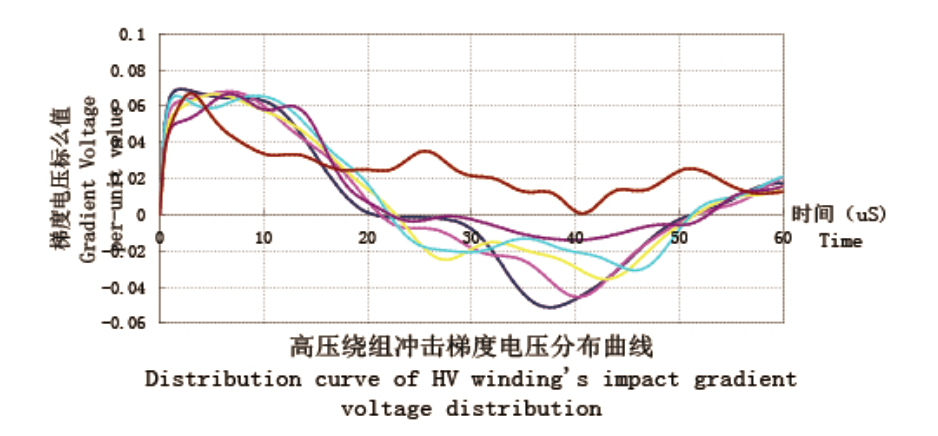
Low loss: Magnetic flux leakage calculation and corresponding measures to effectively reduce the stray loss, and in the meantime effectively prevent local overheating and lower temperature rise of winding hot spots. The electromagnetic optimizing design software is applied to optimize the core and winding design.
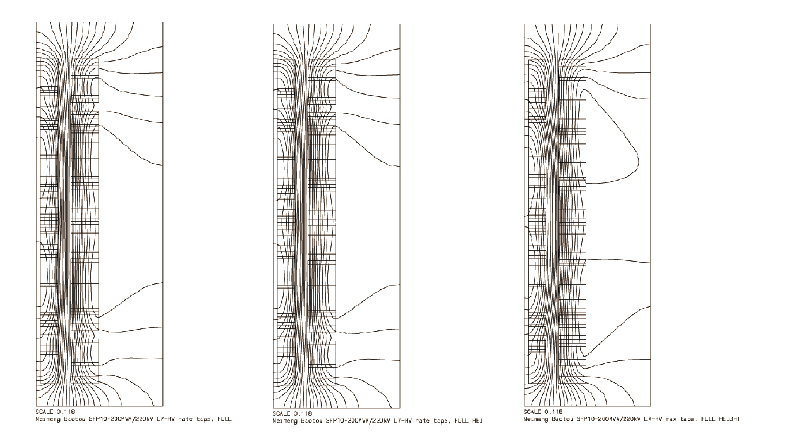
High resistance to short-circuit capacity: Apply transformer resistance to short-circuit capacity accounting software to design HV winding and LV winding. HV winding will be designed as central outlet, up and down parallel connection with axial oil path; the regulating winding will be designed as central outlet in the middle of HV winding with up and down parallel connection to improve transformer short-circuit resistance.
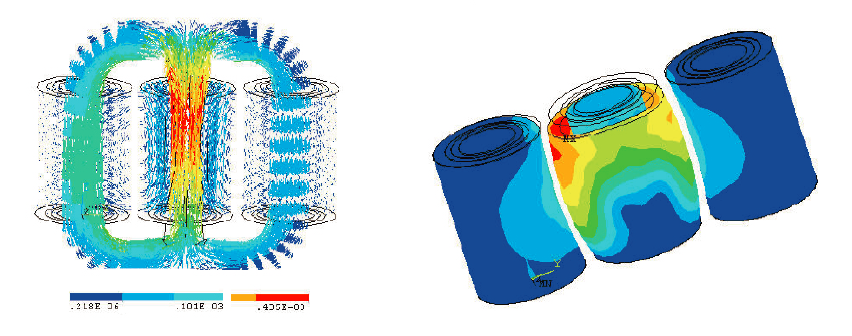
Low partial discharge, extend Transformer Service life.
(1) Analyze calculation of electric field to improve the electric field concentrated region.
(2) The way of vacuum oil filling will effectively prevent the formation of air bubbles inside the transformer and insulation parts to reduce partial discharge.

Low noise: Lower the noise level by choosing high quality steel core material; right flux density and the self-vibration frequency of the core; application of high resistance to short-circuit of the body structure; and improving the connection method of tank and active part.
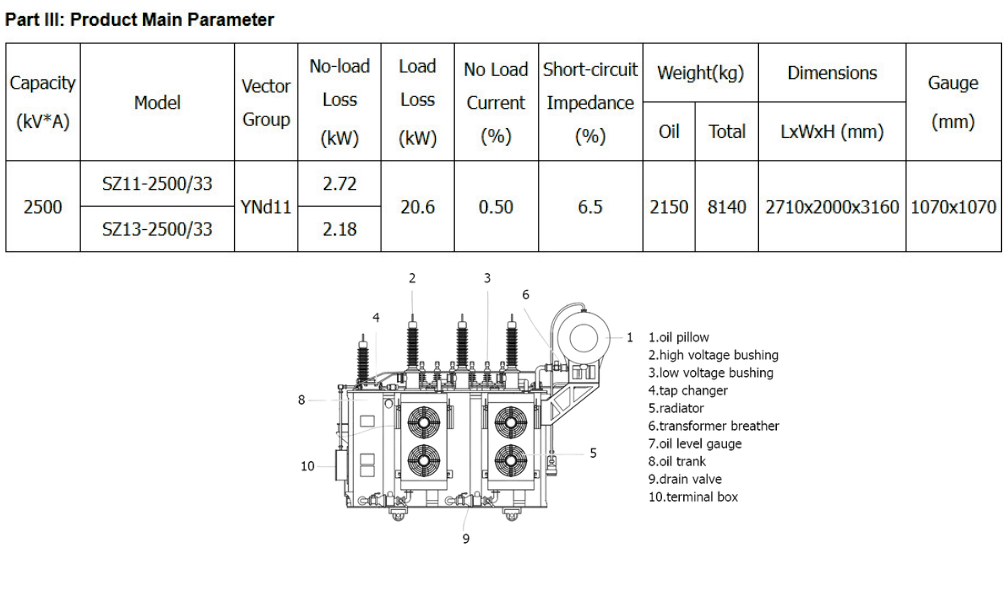
Low temperature rise: Apply reasonable oil flow distribution structure by calculation of oil flow distribution; reduce the winding hot spot temperature rise and the average temperature rise in order to increase overload capacity of each part, extend the life of transformer.
